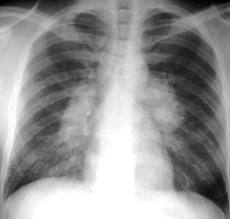Physical Activity and Quality of Life Improvements of Patients with Idiopathic Pulmonary Fibrosis Completing a Pulmonary Rehabilitation Program.
Respir Care. 2014 Sep 2;
Authors: Gaunaurd IA, Gómez-Marín OW, Ramos CF, Sol CM, Cohen MI, Cahalin LP, Cardenas DD, Jackson RM
Abstract
INTRODUCTION: Pulmonary rehabilitation is effective for patients with COPD, but its benefit is less clearly established in idiopathic pulmonary fibrosis (IPF), especially in regard to levels of physical activity and health-related quality of life. The objectives were to determine whether pulmonary rehabilitation increased physical activity as assessed by the International Physical Activity Questionnaire (IPAQ), and improved quality of life and symptoms as assessed by the St George respiratory questionnaire for IPF (SGRQ-I) and the Borg dyspnea index (BDI).
METHODS: Subjects who met current criteria for IPF were randomized to a 3-month pulmonary rehabilitation program (n = 11) or to a control group (n = 10). The rehabilitation group participated in twice-weekly, 90-min exercise sessions (24 total sessions). The control group maintained its preceding, normal physical activity. All subjects underwent 6-min walk tests to assess the postexertion BDI. The SGRQ-I and a 5-point self-assessment of health were completed at baseline, after 3 months of intervention or observation, and after 3-month follow-up. All subjects completed the IPAQ weekly.
RESULTS: Subjects in the rehabilitation group maintained significantly higher levels of physical activity throughout the 3-month rehabilitation program (rehabilitation: 51,364 ± 57,713 [mean ± SD] metabolic equivalent of task-minutes; control: 20,832 ± 37,155, P = .027 by 2-tailed Mann-Whitney test). SGRQ-I symptom domain scores improved considerably by -9 ± 22 in the rehabilitation group, whereas in the control group they worsened (16 ± 12 rehabilitation compared with control, P = .013 by 2-tailed Mann-Whitney test). During the 3-month follow-up, self-reported physical activity levels in the rehabilitation group were 14,428 ± 8,884 metabolic equivalent of task-minutes and in the control group 16,923 ± 32,620 (P = .173 by 2-tailed Mann-Whitney test), demonstrating substantial reversal of activity in the rehabilitation group. BDI scores after 6-min walk tests did not change significantly.
CONCLUSIONS: A 3-month rehabilitation program significantly improved symptoms (SGRQ-I) and physical activity levels (IPAQ) in subjects with IPF while they participated actively in the program.
PMID: 25185149 [PubMed - as supplied by publisher]
 Purpose of review : An overview over the role of lung transplantation in interstitial lung diseases will be given.
Purpose of review : An overview over the role of lung transplantation in interstitial lung diseases will be given.

